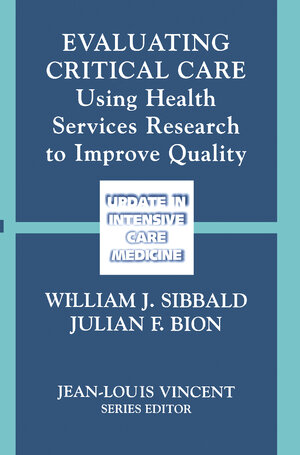
×
![Buchcover ISBN 9780387953816]()
Evaluating Critical Care
Using Health Services Research to Improve Quality
herausgegeben von William J. Sibbald und Julian F. BionMeasuring the quality of a complex service like critical care that combines the highest technology with the most intimate caring is a challenge. Recently, con sumers, clinicians, and payers have requested more formal assessments and comparisons of the quality and costs of medical care [2]. Donabedian [1] pro posed a framework for thinking about the quality of medical care that separates quality into three components: structure, process, and outcome. An instructive analogy for understanding this framework is to imagine a food critic evaluating the quality of a restaurant. The critic might comment on the decoration and lighting of the restaurant, how close the tables are to each other, the extent of the wine list and where the chef trained. These are all evaluations of the restaurant structure. In addition, the critic might comment on whether the service was courteous and timely - measures of process. Finally, the critic might comment on outcomes like customer satisfaction or food poisoning. Similarly, to a health care critic, structure is the physical and human resources used to deliver medi cal care. Processes are the actual treatments offered to patients. Finally, outcomes are what happens to patients, for example, mortality, quality of life, and satisfac tion with care (Table 1). There is a debate about which of these measurements is the most important measure of quality.


